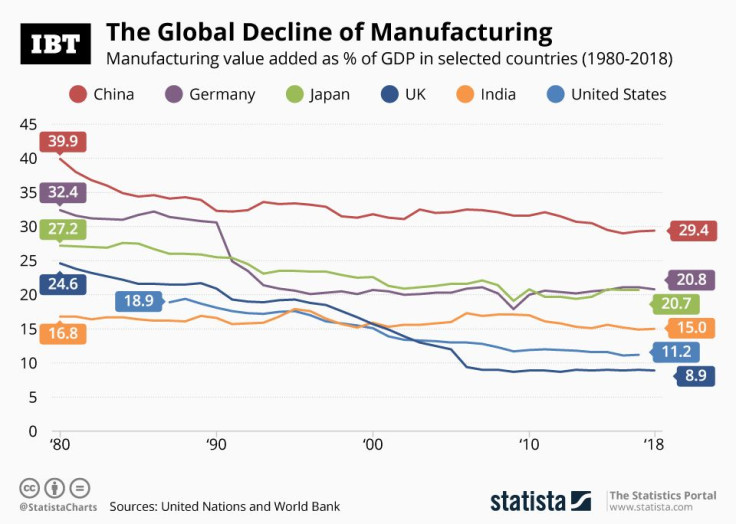Infographic: The Global Decline Of Manufacturing

Emerging and advanced economies alike are experiencing a decline of their manufacturing sectors, which are becoming less and less important for national incomes. In the 1980s, industrial production made up a quarter or more of national GDPs around the world, but that share has been in ongoing decline. This is according to data from the World Bank and the United Nations.
As the IMF notes, the loss of manufacturing jobs has been a source of anxiety across developed countries, as many fear the disappearance of well-paying jobs for low and middle-skilled workers and ultimately worsening inequality. President Donald Trump, for instance, has made the attempt to keep manufacturing jobs in the U.S. one of his signature issues.
The loss of manufacturing jobs can in fact have devastating effects on regions that have relied on certain industries for decades. But increased automation also means that many jobs that appear to be “moving overseas” actually never arrive there. In developing economies, workers are shifting from agriculture straight to the services industry, leapfrogging employment in manufacturing.
While a growing services sector shows that a country is growing wealthier, this might not be the case for workers shifting from manufacturing to the services industry – and taking the pay cut that can come with this change. However, whether a worker is employed in the manufacturing or the services sector is not the biggest predictor of their level of salary. According to the IMF, salary inequality within different economic sectors has been growing much faster than salary differences in between sectors.





















